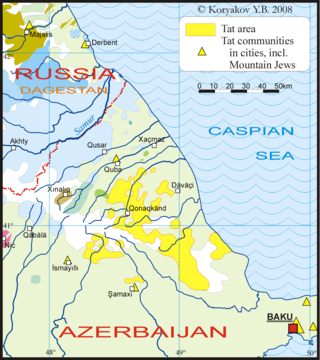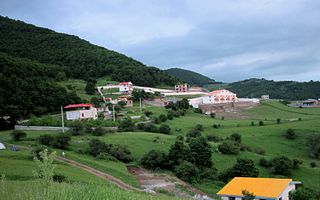
Tehran is the capital and largest city of Iran and the largest city in Tehran Province. It also serves as the capital of the province, county and the Central District. With a population of around 9 million in the city and around 16 million in the larger metropolitan area of Greater Tehran, Tehran is the most populous city in Iran and Western Asia, and has the second-largest metropolitan area in the Middle East, after Cairo. It is ranked 24th in the world by metropolitan area population.

Iran's population increased dramatically during the later half of the 20th century, reaching about 80 million by 2016. As of 2022, Iran's population is around 86.5 million. In recent years, however, Iran's birth rate has dropped significantly. Studies project that Iran's rate of population growth will continue to slow until it stabilises above 100 million by 2050. Half of Iran's population was under 35 years old in 2012.

Tehran province is one of the 31 provinces of Iran. It covers an area of 18,814 square kilometres (7,264 sq mi) and is located to the north of the central plateau of Iran.

Ardabil Province is one of the 31 provinces of Iran. It is in the northwest of the country, in Region 3, bordering the Republic of Azerbaijan, and the provinces of East Azerbaijan, Zanjan, and Gilan. Its administrative centre is the city of Ardabil. The province, spanning an area of 18,011 km2, and established in 1993, was carved out of the eastern part of East Azerbaijan.

East Azerbaijan Province is one of the 31 provinces of Iran. It is located in Iranian Azerbaijan, bordering Armenia, Republic of Azerbaijan, Ardabil province, West Azerbaijan province, and Zanjan province. The capital of the province is Tabriz. East Azerbaijan province is in Region 3 of Iran, with its secretariat located in its capital city, Tabriz.

The Tat people are an Iranian people presently living within Azerbaijan and Russia. The Tats are part of the indigenous peoples of Iranian origin in the Caucasus.

Azerbaijanis, Azeris, or Azerbaijani Turks are a Turkic ethnic group living mainly in the Azerbaijan region of northwestern Iran and the Republic of Azerbaijan. They are predominantly Shia Muslims. They comprise the largest ethnic group in the Republic of Azerbaijan and the second-largest ethnic group in neighboring Iran and Georgia. They speak the Azerbaijani language, belonging to the Oghuz branch of the Turkic languages.
Mizrahi Jews, also known as Mizrahim (מִזְרָחִים) or Mizrachi (מִזְרָחִי) and alternatively referred to as Oriental Jews or Edot HaMizrach, are a grouping of Jewish communities comprising those who remained in the Land of Israel and those who existed in diaspora throughout and around the Middle East and North Africa (MENA) from biblical times into the modern era.
This article focuses on the status of ethnic minorities in contemporary Iran.

Azerbaijan or Azarbaijan, also known as Iranian Azerbaijan, is a historical region in northwestern Iran that borders Iraq and Turkey to the west, and the Nakhchivan Autonomous Republic, Armenia, and the Republic of Azerbaijan to the north.
Gilaks are an Iranian ethnic group native to the south of Caspian sea. They form one of the main ethnic groups residing in the northern parts of Iran. Gilak people, along with the closely related Mazandarani people, comprise part of the Caspian people, who inhabit the southern and southwestern coastal regions of the Caspian Sea.

Tat, also known as Caucasian Persian, Tat/Tati Persian, or Caucasian Tat, is a Southwestern Iranian language closely related to, but not fully mutually intelligible with Persian and spoken by the Tats in Azerbaijan and Russia. There is also an Iranian language called Judeo-Tat spoken by Mountain Jews.
Iranian Arabs are the Iranian citizens who speak Arabic as a first language. In 2008, Iranian Arabs comprised about 1.6 million people, and are primarily located in Khuzestan Province.
Iranian Armenians, also known as Persian Armenians, are Iranians of Armenian ethnicity who may speak Armenian as their first language. Estimates of their number in Iran range from 70,000 to 500,000. Areas with a high concentration of them include Tabriz, Tehran, Salmas and Isfahan's Jolfa quarter.
The Azerbaijani people are a Turkic ethnic group of mixed ethnic origins, primarily the indigenous peoples of eastern Transcaucasia, the Medians, an ancient Iranian people, and the Oghuz Turkic tribes that began migrating to Azerbaijan in the 11th century CE. Modern Azerbaijanis are the second most numerous ethnic group among the Turkic peoples after Anatolian Turks and speak North Azerbaijani and/or South Azerbaijani. Both languages also have dialects, with 21 North Azerbaijani dialects and 11 South Azerbaijani dialects.

Ethnic groups in the Middle East, in the 'transcontinental' region which is commonly a geopolitical term designating the intercontinental region comprising West Asia without the South Caucasus, and also comprising Egypt in North Africa. The region has historically been a crossroad of different cultures and languages. Since the 1960s, the changes in political and economic factors have significantly altered the ethnic composition of groups in the region. While some ethnic groups have been present in the region for millennia, others have arrived fairly recently through immigration. The largest socioethnic groups in the region are Arabs, Turks, Persians, Kurds, and Azerbaijanis but there are dozens of other ethnic groups that have hundreds of thousands, and sometimes millions of members.
The majority of the population of Iran consists of Iranic peoples. The largest groups in this category include Persians and Kurds, with smaller communities including Gilakis, Mazandaranis, Lurs, Tats, Talysh, and Baloch.

Iranian Azerbaijanis are Iranians of Azerbaijani ethnicity. Most Iranian Azerbaijanis are bilingual in Azerbaijani and Persian. They are mainly of Iranian descent. They are primarily found in and are native to the Iranian Azerbaijan region including provinces of and in smaller numbers, in other provinces such as Kurdistan, Qazvin, Hamadan, Gilan, Markazi and Kermanshah. Iranian Azerbaijanis also constitute a significant minority in Tehran, Karaj and other regions.

Khoda Afarin County is in East Azerbaijan province, Iran. Its capital is the city of Khomarlu.
Eshtehard is a city in the Central District of Eshtehard County, Alborz province, Iran and serves as capital of both the district and the county.













